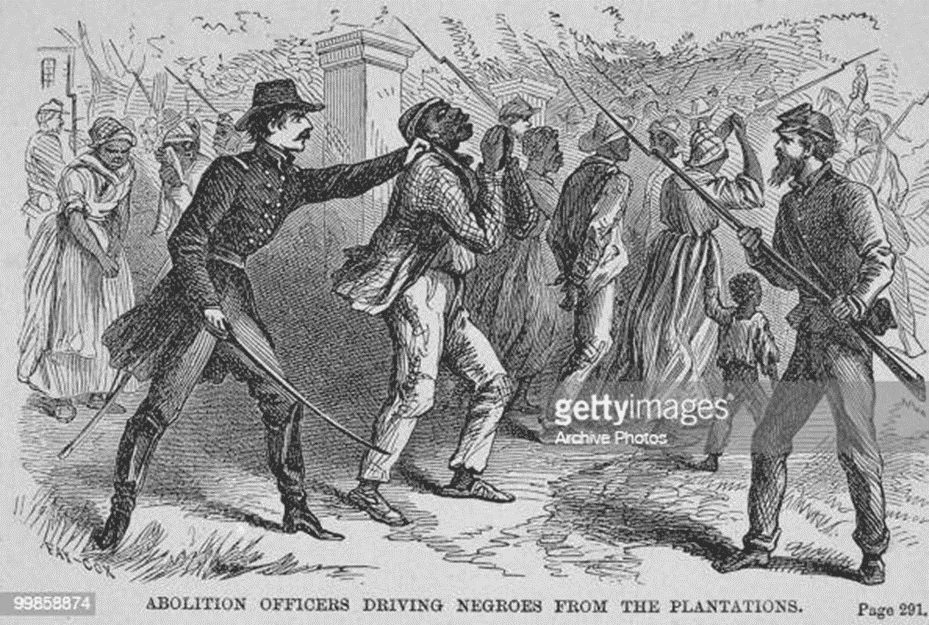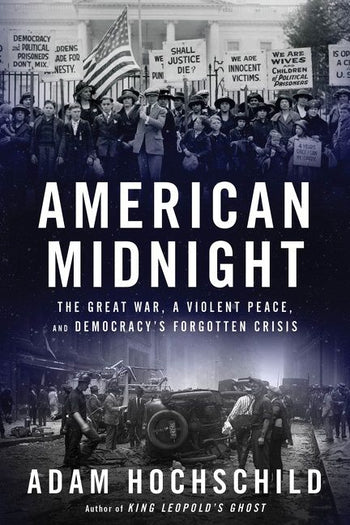A Review of Donald Yacavone’s Teaching
White Supremacy: America’s Democratic Ordeal and the Forging of Our National
Identity
For many years I’ve been looking for
an excuse to write about my observations of race relations in the North and the
South, and now I have my excuse. But first, my observations.
I grew up in Oklahoma City when it
was segregated, first by law, and then for several years in spite of the 1954 Brown
v. Board of Education decision. My high school was segregated when I
graduated in 1966. The first very few Black students would integrate the school
in 1968. Other than the week each summer that I went to church camp, my first
encounter with Black people was when I went to college in 1966.
In 1970 a rumor went through my
parents’ neighborhood that a Black family would be moving in. One of their
neighbors was adamant that would not happen. My parents had built their house
in 1958 and had just paid off their mortgage. I should mention here my father
was not virulent, but he was a racist in the Southern sense. He did not like
Black people in general, but he did on occasion meet individual Black people he
liked or at least tolerated. I would compare him to Senator Bird in Harriet
Beecher Stowe’s Uncle Tom’s Cabin, who was a full-throated supporter of
the Fugitive Slave Act in the Ohio senate, but when faced with Eliza and her
son in his own kitchen, helps them escape further into the underground
railroad. I asked my father what he would do if a Black family moved in, and he
said, “No one who can afford to buy in this neighborhood is going to let their
property go down, and that’s all I’m interested in.” As it turned out, there
was no Black family moving in.
I’m going to skip ahead a few years
to a visit I made at Christmas in the 1980s. I was out with my sister, and we
passed a house in the neighborhood. My sister said, “Now don’t tell Daddy, but
a Black man lives there.” Another time I
was out with my brother, who said, “There’s a Black man who lives in that house,
but we don’t want Daddy to know.” Eventually, I was out with my father, who
said, “I think there’s a Black man who lives in that house. He’s a cop, and he
takes really good care of his yard.” And the neighborhood was integrated. It
soon became multicultural When we sold the house in 2013, we had competing
offers from a Hispanic family and a Vietnamese family.
I finished my degree in 1970. That
summer I took a graduate course taught by Dr. Jere Roberson at what is now the
University of Central Oklahoma. If memory serves, he had just moved to UCO from
Georgia. We were all steeped in the belief that the South was racist while the
North was not. Donald Yacavone and others describe this as the North’s sacred
“treasury of virtue” for having fought the Civil War and freed the slaves.
It would not be long before I saw
cracks in this sacred “treasury of virtue.” In 1971 I moved to Columbus, Ohio
for a job. I had only been there a few days when one of my coworkers told me
she and her husband were going to buy a home in a new development, but she’d
found out some Black people were also buying there, so she and hubby backed out
of the deal. I guess she thought I, being from Oklahoma and all that, would
understand. But I didn’t. I gradually learned that Columbus was quite
segregated. My real shock came when I moved to Long Island in 1974. I met the
most racist people on Long Island I have ever met. Bar none. We had one Black
secretary where I worked, and I don’t know how she did it. People were rude and
condescending.
One incident stands out in my
memory. A white family sold their house in Rosedale, Queens to a Black family
who moved from London in 1975. The white family’s former neighbors picketed
their new home in Westbury. And then, in January 1975, the Black family’s new
home in Queens was bombed. As the owner of that home said, “In England, you hear about this
happening in the South, but you just don't think it happens in New York City.”
So much for that sacred “treasury of virtue.”
Lest you think that was nearly fifty years ago and things are
surely different now, I’ll direct you to a 41-minute 2021 Newsday documentary
titled “Long Island Divided: How Real Estate Agents Treated Undercover Clients
on Long Island,” which resulted from a three-year investigation.
(https://www.google.com/search?q=newsday+unequal+treatment&oq=news&aqs=chrome.0.69i59j69i57j0i512j0i131i433i512j0i131i433j69i61j69i60l2.3574j0j7&sourceid=chrome&ie=UTF-8#fpstate=ive&vld=cid:2018caa4,vid:wqN-D3f49fE)
OK, so now the book. I read a review
of Teaching White Supremacy and didn’t know what to expect. I found the
cover, which, as you can see, is an 1873 print celebrating westward expansion,
railroads, the telegraph, overland mail delivery, and features a woman floating
in the air carrying a school book while holding one end of a telegraph line,
off-putting. Other than (possibly) the school book, what does any of this have
to do with teaching? Fortunately, I started reading the book anyway, and oh,
my. The more history I read the less I find I know.
If a high school student today is
taught about slavery and the Civil War at all, they’re taught the North was
against slavery and the South was not, which is far from the truth. For one
thing, the textile mills in New England, which employed people, including
children, in deplorable conditions which were often worse than slavery, relied
on cheap cotton, and cheap cotton depended on slavery. And that’s just one
example of how the North was just as reliant on slavery as the South. As
Yacavone points out, some of the earliest history textbooks, most of which were
published in the North, portrayed slavery in a favorable light, and almost
every one of them described slaves as having been lucky to have been “rescued”
from the wilds of Africa and brought to Our Christian Nation. Slaves were
almost universally portrayed as ignorant and of a species somewhat below that
of the white race. Even abolitionists bought into that, hating slavery but
having no use for the people who were slaves. Even Harriet Beecher Stowe sent
most of her escaped slaves off to Africa in the end. In a New York Review of
Books review of Kris Manjapra’s Black Ghost of Empire: The Long Death of
Slavery and the Failure of Emancipation Sean Wilentz points out white
abolitionist societies were not integrated. In short, at the end of the Civil
War, a fully integrated society does not seem to have been the goal of anyone.
And there were those who wanted to make damn sure it never happened.
After
slavery ended, the goal of many writers of history was to emphasize how well
slavery had worked, with happy slaves, kind masters, and all that. One of the
ones Yacavone discusses is John H. Van Evrie (1814?-96), who wrote from the
1850s to 1879 and blamed the Civil War on northerners and abolitionists
cooperating with British agents in Canada. In one of the more amusing passages
in Van Evrie’s work, published under his partner’s name, Van Evrie wrote that
after the Emancipation Proclamation was issued, the North sent an “abolition
army” into the South to compel “negroes” to be free to do as they pleased, go
where they pleased, and be as lazy and useless as they pleased. Alas, it seems
the slave population remained entirely loyal to their masters and refused to
leave their plantations. The “invading army” found “the negroes” so devoted to
their white masters that Yankee soldiers had to tie them up and threaten to
“bayonet them” to force them out of their homes.

Yacavone takes us through several
cycles of teaching white supremacy including the emancipationist challenge,
1867-1883, roughly coinciding with Reconstruction, what he calls “causes lost
and found,” 1883-1919 in which he describes the ascendancy of the Dunning
School (which was still being taught when I was in high school and an
undergrad), “Eugenocide,” the 1920s in which the “science” of eugenics was
added to the white supremacist formula, the Lost Cause victorious, 1920-1964
during which Robert E. Lee morphed into a national hero meriting statues North
and South and it would have been blasphemy to say anything good about
Reconstruction, and finally renewing the challenge, which discusses the impact
of the new school of historians, who have actually gone back and reviewed
primary documents rather than merely building on the bad history written by
previous historians. I was exposed to some of the new thought in grad school at
The Ohio State University in the 1970s.
The book
mentions so many texts and writers it is hard to keep them straight. There are
many villains, but there are also heroes, among them Albert Bushnell Hart
(1854-1943), a Harvard historian who set aside his own prejudice to mentor some
of the country’s most influential Black scholars, including W.E.B. Du Bois.
I do have
a couple of minor nits to pick with Mr. Yacavone, both of which appear on page
278. The first is the wall that was constructed in Detroit in the 1930s to
secure FHA financing for a housing development was in the Eight-Mile area and
was a half mile long. It was not, as Yacavone writes, eight miles long. Second,
he says that from 1865 to 1934 the federal government distributed 246 million
acres of Western lands to 1.5 million white families. The land was available to
Black families as well. My grandparents homesteaded in Colorado, and one of
their neighbors was Black. As I said, these are minor, but this country’s
treatment of Blacks is bad enough. There’s no need to embellish!
As I was
finishing the book the thought occurred to me that perspectives on the Civil
War, slavery, and Reconstruction have gone through several iterations, and who
is to say they won’t revert back to Dunning or even Van Evrie? As if reading my
mind, Yacavone in his epilogue discuses the January 6, 2021 assault on the
Capitol and notes the many Confederate flags that showed up that day. He notes
the history wars, the fact that high school history, when it is taught at all,
is often taught by coaches who have no training in the subject. As a result a
majority of students with a diploma are ignorant of the basic facts of American
history and are at risk of being led to believe just about anything about our
past. I find that scary. How about you?
The book
is excellent. I get most of the books I read from the library, and there are
very few that I like well enough that I want to own for future reference. This
is one of those books.


